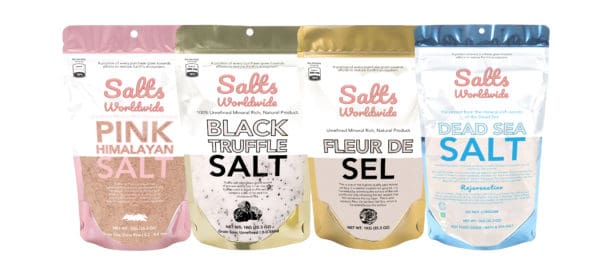Himalayan pink salt (Lazakh) is a salt mineral which is known for its delectable taste and unique color. This type of mineral is derived from natural deposits which are spread throughout the country, especially in the areas between the Karakoram and the Karikasas ranges. This type of salt can be found in many countries around the world such as France, Egypt, India, Italy, China, Nepal, Russia, South Africa, USA, Canada and Switzerland. The salt can also be found in salt blocks and is known by the various names such as pink salt, rock salt, white salt, etc. This type of mineral is used to make numerous products including jewellery, kitchenware, household cleaning products, diabetic supplies, cosmetic products, bath products, food service, restaurant equipment, sports equipment and many more.

Himalayan pink salt is mined from the Himalayan region of Pakistan. The salt, which tends to have a pink tint because of trace minerals present, is mainly used as a popular food supplement to substitute regular table salt but is also now being used for food presentation and cooking as well as for spa treatments. Apart from being used in food and health-care products, it has also been used to decorate looceps and other dishes, as well as to create the borders of beautiful flower arrangements. It is interesting to note that this salt is known to cure several illnesses, including high blood pressure, respiratory problems, diabetes, kidney problems, cancer and heartburn. Many medical experts believe that eating foods rich in this pink mineral are beneficial in preventing several health complications.
One way of reducing the negative effects of regular salt on the body is to consume products made from Himalayan pink salt. This trace mineral can significantly lower blood pressure and can help reduce the risk of heart attack and stroke. It helps control cholesterol levels, which is very useful in lowering the risk of heart disease. Its ability to improve the immune system is the reason why experts advise people with reduced sodium intake to include pink salt in their daily diet.
It is advised that people with reduced sodium intake should start eating foods rich in potassium and calcium instead of regular table salt. Potassium can help improve sodium excretion and improve the kidney’s function. Calcium on the other hand, facilitates the absorption of calcium for ensuring better kidney functions. Foods rich in magnesium, potassium and phosphorus can also help reduce sodium consumption, especially foods rich in protein, iron and calcium. This includes organic chicken, tofu, beans and almonds.
Pink salt lamps are a great way to enjoy the unique flavor of this exotic salt. Most salts contain a neutral ph value. The ph value of Himalayan salt lamps is 4.5, which means it has high magnesium and potassium content. It is this mineral content that gives it such a unique flavor and makes it an ideal salt for seasoning food and drinks. Himalayan salt lamps are popular in households as they are easy to use and serve as multifunctional accessories.
Pink Himalayan salt lamps use a special chemical that causes its color to change when heated. The chemical is known as “salt flexogens.” This chemical gives pink salt its color when it is exposed to heat. Other than its delectable flavor, pink salt also has many health benefits. It contains high amounts of sodium and potassium, which are vital for maintaining fluid and electrolyte balance; preventing or reducing muscle cramps; reducing risks of heart attack and stroke; improving blood circulation; easing muscle tension; and easing skin problems, including acne.
Himalayan salt has two essential minerals that are extremely important to human life: iodine and sodium. Iodine, the major component of fish and seafood, and the most abundant mineral in seawater, plays a vital role in thyroid hormone production. Thus, iodine deficiency can result in hyperthyroidism and other disorders. Furthermore, sodium helps to form the blood, bone, and nerve cells. High levels of sodium can cause hypertension, atherosclerosis, constipation, kidney stones, and high cholesterol. Although the flavor of Himalayan salt may be enough to give you a reason to add it to your diet, it is still best to consult your doctor before incorporating any new supplement into your diet.
Sea salt and Himalayan salt differ primarily in their sodium content. Sea salt tends to have a higher concentration of salt, whereas Himalayan salt tends to have a lower concentration of salt. It is the salt content of sea salt that gives it its distinctive flavor and color. It is also worth noting that sea salt tends to be more expensive than table salt. Therefore, if you want to save money on food or treat yourself occasionally, purchasing cheap Himalayan or sea salt can be a great idea.


Recent Comments